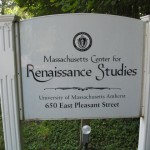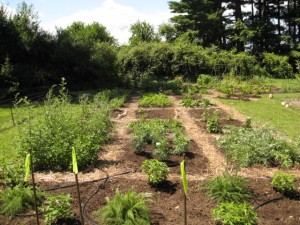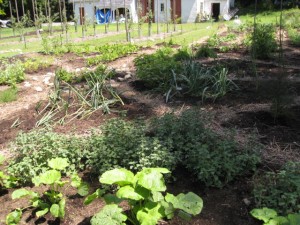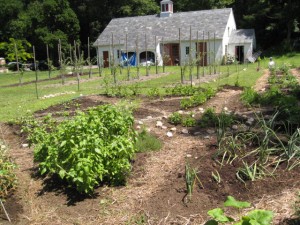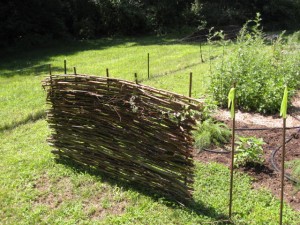About a month ago, I signed up for a one-day Earthwatch expedition to Cambridge, less than a two-hour drive from my home. I had volunteered on three previous Earthwatch teams, all to exotic locales in Central and South America, so this was definitely a change.
Today was the day: I was out of the house by 7:30, drove via the Pike and 128 North to Route 2 East, parked at Alewife-Brook, then took the Red Line to Central Square. Our rendezvous was the Cambridge Department of Public Works headquarters at 147 Hampshire Street. By 10 am, Team B had assembled, and we were greeted by Gitte Venicx, the expedition scientist, who in turn introduced us to David Lefcourt, City of Cambridge Arborist.
Gitte talked to us about the project, and then explained what we were going to be doing out on the streets today. Basically, we were going to locate specific trees which the City had planted about six years ago, verify the species, measure the tree diameter (dbh), observe the tree’s general health, and record these data for the tree database. Yes, the City of Cambridge has a database which stores information on the location of every tree it owns, the type, and when it was planted. Well, trees and their upkeep cost money, so I suppose they do need to know all this. But speaking of money, trees also provide services to the City, and one of the goals of this project is to try to quantify exactly what benefits trees provide to an urban environment.
The team split into smaller groups: two groups of four people and another of three. My group of four, two school teachers, an Earthwatch staff member, and me, worked well together, in central Cambridge between Broadway and Mass Ave, and MIT and Inman Square. One person located the tree on the maps we were given, a second person measured the tree (we used a special measuring tape), the third verified the species, and I recorded the data in a spreadsheet. (We were supposed to have been able to use a tablet app, but it was still in development and not working that well.)
Fortunately, the day was somewhat overcast, and the rain held off, so we had ideal conditions for working outside and walking for hours up and down city streets. We paused in Central Square to eat our lunches, which were provided by Earthwatch, but we worked quickly and steadily, and by 3 pm, we had located and documented our quota of trees. Around 3:30, the entire team gathered again at Sennott Park near the DPW headquarters, to discuss what we had accomplished and to share our thoughts on the project.
I am pleased to have been able to participate in this project. Perhaps in the grand scheme of things, what we did wasn’t much, but it was a small contribution toward understanding and preserving what remains of the natural environment in one of the largest and oldest cities in New England. I still feel a personal connection to Cambridge, having lived very near where we worked today way back in the spring and summer of 1978. We didn’t go down my old street, Bigelow Street behind Cambridge City Hall, though we did walk down Norfolk Street, a locale made infamous recently by the Boston Marathon bombers.
